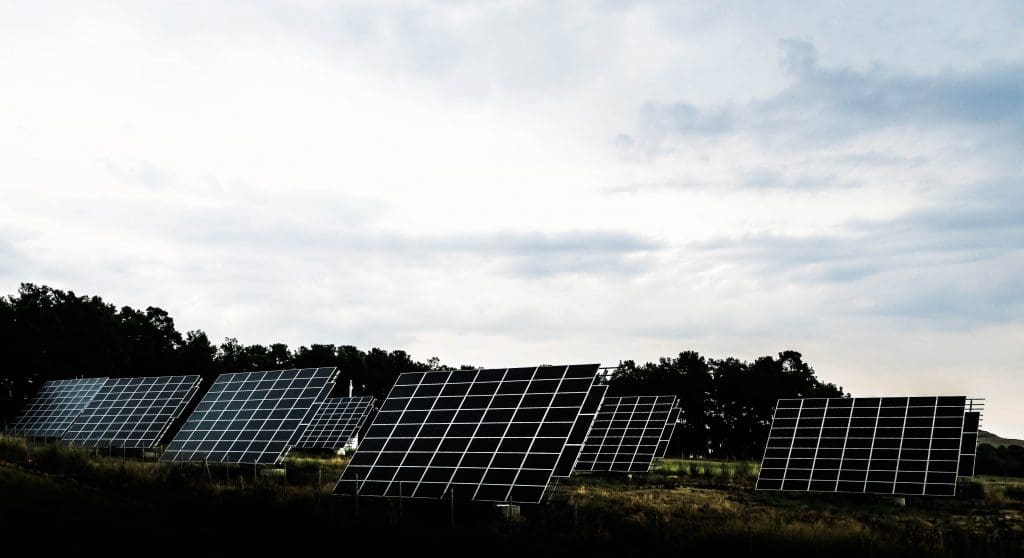Solar deployment is accelerating as more states, municipalities and corporations adopt clean energy goals; and access is expanding as more states adopt community solar policies. At its current trajectory, however, the emerging clean energy economy — and specifically the rapidly expanding solar market — is replicating the same disparities as the old fossil fuel-based one.
This is observable and measurable, from who leads and owns the companies that are building, investing in and operating solar projects; to who has access to solar savings; to where solar projects are being built. Last year’s Solar Industry Diversity Report (PDF), from the Solar Foundation, put many of these challenges in sharp relief.
Old habits, and old paradigms, die hard. For solar, some of these challenges are inherent because the market is structured based on incentives that can be accessed only by wealthy people and companies with sufficient income and financial capital to be able to use tax credits.
Systems produce outcomes according to the values on which they’re founded, and national incentives for solar and other renewables value reducing taxes for the wealthy. Vastly more wealth is held by white people and vastly more companies, including solar companies, are led by white people and specifically white men. Therefore, a consequence of the solar market incentives structure is to make the same people and companies that are already wealthy even wealthier. While women, African-Americans and other people of color may be able get jobs, ownership is constrained to those who already have capital.
Confronting these challenges is made more complex by the federalist structure of the U.S. energy market. Because the rules are set state-by-state and vary depending on the type of utility (investor-owned, rural or municipal) serving a given community, there is no one-size-fits-all solution. We have energy futures that are as diverse as U.S. policy, utility and physical (natural and built) infrastructure.
Solutions, therefore, must be localized. It is urgent to inject scalable models built to deliver equity by leveraging the full scope of solar value chains. It’s hard, and it takes time to do right, but it’s worth the work today to have the futures we want tomorrow and in the decades ahead.
To quote my friend Ari Wallach, founder of Longpath, “Future is a verb.”
We all have a role to play. Corporate sustainability and clean energy leaders, bankers and investors, policymakers, nonprofit advocates and advisers, and the army of people out there building clean energy projects every day — the decisions we make about how we do our work will determine whether we’re delivering on the promise of energy equity and solar, and sustainability, for all.
Countless pioneers out in the world already are showing the way. You may not be aware of their work because it tends to be deeply local and focused on the long term, so not very visible unless you live next door or happen to be looking. But that’s what this series is all about. From case studies on corporate leadership to detailed research, we’ll explore “how to” together and celebrate the stories of people getting good things done.
Three quick stories
Here are just three of many examples:
1. You can’t underestimate the value of corporate renewable buying power. Walmart played a critical role expanding renewable energy buying in Georgia. It’s an important outcome for energy equity, too. Many municipal utilities are the economic development engines for the communities they serve because municipal utility revenues (not property taxes) help pay for essential services such as firemen, teachers and police. By supporting a new state policy that enables municipal utilities to compete for corporate renewable energy business for the first time, Walmart also helped the small towns they serve to thrive.
2. Financial innovation is fundamental to an equitable energy future because subsidies run out, and you can’t sustain access and inclusion unless you make the underlying business systems work for everyone. Expanding solar access matters for business, too, because it would more than double the addressable market. That’s why Groundswell, Elevate Energy, Clean Energy Works and Southface kicked off a U.S. Department of Energy-supported research study last year to identify scalable solar models to expand solar access that would work across a diversity of states and utilities.
When we kicked off the project, we had identified three models and anticipated finding two to three more as we got into the work. As of this month, we’ve identified 45 innovative solar project finance models that are bringing the benefits of clean energy to a more economically diverse community of customers.
These include pre-payment structures, utility-led approaches that share the infrastructure cost benefits of solar as savings to residents, and entirely privately financed approaches that allocate greater savings to income-qualified customers who need them most.
We’ll be periodically releasing data, findings and publications here with GreenBiz. In the meantime, if you’ve got an innovative model for expanding solar access that you’re able to share, we’d love to hear from you.
3. One person can make a difference and Zsa Zsa Heard, CEO of the LaGrange Housing Authority (LHA), is proof-positive of that. She and her team are transforming the LHA community, which began with changing the name of one of the apartment communities it manages from Benjamin Harvey Hill Homes, named for a slave-owning Confederate senator, to The Phoenix.
Sustainability is part of her strategy for improving people’s quality of life, and it includes local solar power. Enabled by funding from The Solutions Project, LHA installed a SmartFlower solar system that plays the dual purpose of engaging kids about careers in energy, and LHA’s solar savings get reinvested in after school programs and supplies.
Three stories, three approaches and so much more to learn. Next month, we’ll explore the design strategy for a new community-determined Resilience Hub that will serve Atlanta’s historically black colleges and universities.
Source: GreenBiz









